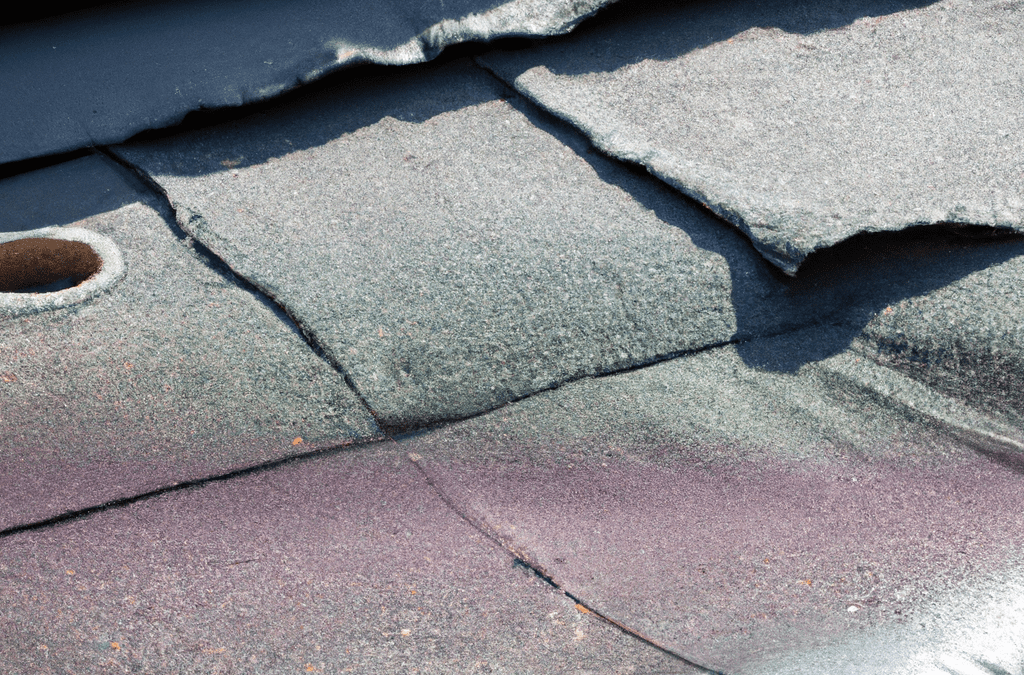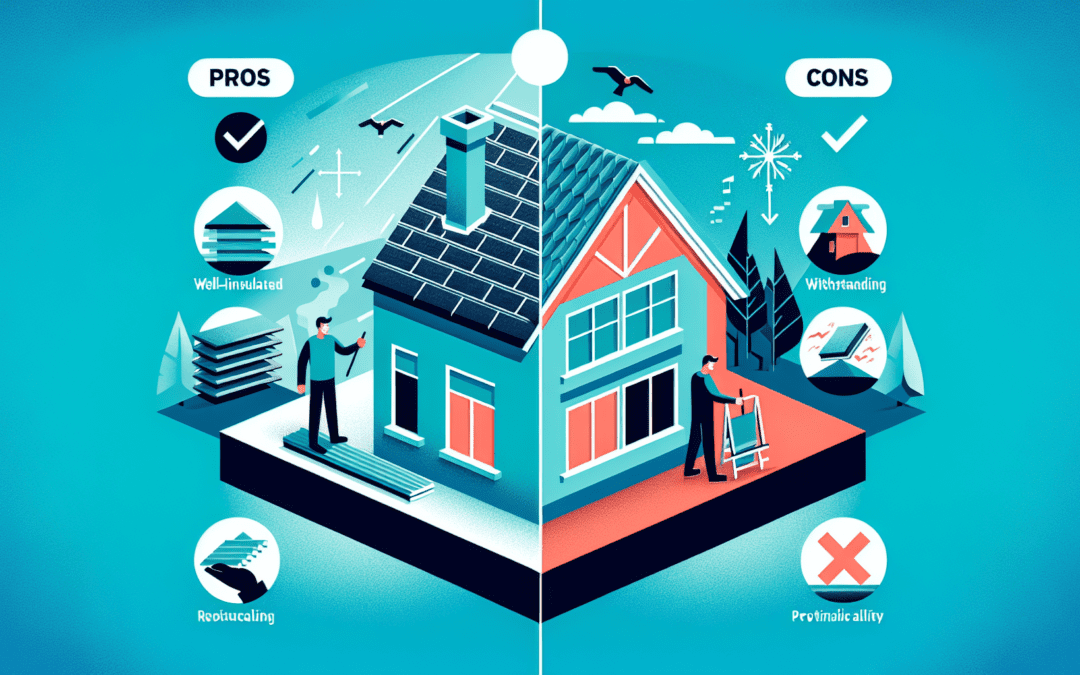
May 17, 2024 | Commercial, Roofing
Understanding EPDM Roof Bubbles
EPDM (ethylene propylene diene terpolymer) roofing is a popular choice for commercial and residential buildings due to its durability and cost-effectiveness. However, one common issue that can arise with EPDM roofs is the formation of bubbles. These bubbles can be caused by a variety of factors such as poor installation, trapped moisture, or extreme weather conditions. While these bubbles may not always lead to immediate leaks, they can cause problems over time if not properly addressed.
Assessing the Situation
If you notice bubbles forming on your EPDM roof, the first step is to assess the situation. Are the bubbles small or large? Are they scattered across the roof or concentrated in one area? It’s important to determine the extent of the problem before deciding on the best course of action.
Dealing with Small Bubbles
If the bubbles on your EPDM roof are small and relatively few in number, they may not require immediate attention. Small bubbles are often caused by air trapped during installation and may not necessarily lead to leaks. In these cases, monitoring the bubbles for any changes and ensuring proper roof maintenance can help prevent any future issues.
Repairing Large Bubbles
Large bubbles on an EPDM roof can be a more serious problem as they are more likely to trap moisture and eventually lead to leaks. Repairing large bubbles involves several steps:
1. Clean the area: Use a broom or brush to remove any debris or dirt around the bubble.
2. Make an incision: Carefully cut a small slit at the base of the bubble to release any trapped air or moisture.
3. Apply adhesive: Lift the EPDM membrane and apply a specialized adhesive to the roof substrate. Press the membrane back down firmly to ensure a proper seal.
4. Roll the area: Use a seam roller to ensure the membrane is securely bonded to the adhesive and substrate.
Preventing Future Bubbles
Proper installation is key to preventing EPDM roof bubbles. Hiring experienced professionals and ensuring the roof is properly prepared before installation can help minimize the risk of bubbles forming. Additionally, regular roof inspections and maintenance can help catch any potential issues early on and prevent them from escalating.
By understanding the causes of EPDM roof bubbles and taking proactive measures to address them, you can ensure your roof remains durable and leak-free for years to come.

May 1, 2024 | Marketing, Roofing, Sales
Landing commercial roofing contracts can be a tough task, but with the right strategies, you can enhance your chances of success. Below, we’ve laid out some valuable tips to help you secure more contracts and grow your roofing business.
Know Your Stuff
First and foremost, you need to have deep knowledge about commercial roofing. Understand the different materials, techniques, and the latest trends. Being a pro in your field will make clients trust you more. They’ll see that you know what you’re talking about, which is a big deal when choosing a contractor.
Build a Strong Reputation
Having a good reputation is key. If people have heard good things about your work, they’re more likely to hire you. You can build a strong reputation by always doing a great job and encouraging happy clients to leave positive reviews online or refer you to others. Word of mouth is powerful!
Make Connections
Don’t wait for customers to come to you. Get out there and network! Attend industry events, join local business groups, and get active on social media platforms where businesses might look for roofing contractors. The more people know about your service, the higher your chances of landing contracts.
Offer Competitive Pricing
Be smart about your pricing. You don’t want to be too pricey, but you also need to make a profit. Offering competitive pricing can make you more attractive to potential clients. Consider providing free estimates or consultations as a way to get your foot in the door.
Provide Excellent Customer Service
Good customer service goes a long way. Respond quickly to inquiries, be friendly and helpful, and always follow up with your clients. If you make the experience pleasant and easy for them, they’re more likely to choose you for their roofing needs.
Highlight Your Unique Selling Points
What makes your business stand out? Maybe you specialize in sustainable roofing solutions, or perhaps you offer an unbeatable warranty. Whatever your unique selling points are, make sure they’re front and center in your marketing materials and sales pitches.
Use High-Quality Materials
Never compromise on the quality of materials. High-quality materials not only last longer but also provide better protection and a more professional finish. Clients will notice the difference, and it could be the deciding factor in choosing your service.
Keep Learning
The commercial roofing industry is always evolving, so it’s important to keep learning and stay up to date. This might mean attending workshops or taking online courses. The more you know, the better service you can offer, and the more appealing you’ll be to potential clients.
Securing commercial roofing contracts requires effort, skill, and a bit of strategy. By following the tips above, you’ll be well on your way to winning more contracts and expanding your business. Remember, consistency is key, so don’t get discouraged if you don’t see results overnight. Keep at it, and your hard work will pay off.

Apr 29, 2024 | Commercial, Contractors, Design, Materials, Roofing
Finding the right people to take care of your commercial building’s roof is a big deal. It’s not just about fixing leaks or installing a new roof; it’s about making sure your building is safe, secure, and looking its best. If you’re considering rubber roofing for its durability and cost-effectiveness, you’re on the right track. But how do you choose the best commercial rubber roofing contractors? Let’s dive into some tips to help you make the best decision.
Understand Your Roofing Needs
First, it’s essential to know exactly what you need. Rubber roofing can mean a lot of different things, from full replacements to minor repairs. Think about the current state of your roof and what you hope to achieve with this project. Do you need a brand new roof, or are there specific areas that need attention? Understanding your needs will help you ask the right questions when you start talking to contractors.
Look for Experience and Expertise
When you’re looking for a contractor, experience should be at the top of your list. Contractors who have been in the business for a long time will have a track record you can check. They’ll also have a good understanding of the challenges and solutions related to rubber roofing. Ask potential contractors about their experience specifically with commercial rubber roofs. It’s also a good idea to ask for references or examples of previous projects they’ve completed.
Check Licenses, Certifications, and Insurance
Any contractor you hire should be properly licensed to work in your area. They should also have certifications that prove they are trained and skilled in working with rubber roofing materials. It’s equally important to ensure they have insurance. This protects you from being responsible if an accident happens while they are working on your property. Don’t be shy about asking to see these documents; a reputable contractor will be happy to show them to you.
Compare Quotes
Once you have a few contractors in mind, ask each one for a quote. This should be a detailed document that outlines the work they plan to do, the materials they will use, and how much it will cost. Remember, the cheapest option is not always the best option. Take the time to compare what each contractor is offering and consider their experience, the quality of materials they suggest, and the timeline for completing the project.
Communication is Key
Last but not least, pay attention to how well the contractor communicates with you. A good contractor will be easy to reach, will answer your questions clearly, and will keep you updated throughout the project. They should make you feel comfortable and confident in their abilities. After all, they will be taking care of one of the most important parts of your building. Good communication can make the difference between a stressful project and a smooth, successful one.
Choosing the best commercial rubber roofing contractor might seem like a daunting task, but with a little research and the right questions, you can find a reliable professional who will get the job done right. Remember to understand your needs, look for experience and expertise, check licenses and insurance, compare quotes, and pay attention to communication. With these tips in mind, you’ll be well on your way to having a durable, well-installed rubber roof over your head.

Apr 25, 2024 | Contractors, Maintenance, Roofing
Having a damaged roof can be really stressful. It might be from a storm, fallen tree, or something else. Whatever the reason, it’s important to know how to file a claim with your insurance company to get it fixed. Here are the steps you should follow:
Step 1: Check Your Insurance Policy
First things first, grab your insurance policy and read it carefully. You need to know what kind of roof damage your insurance covers. Not all policies cover every type of damage. Also, look for how much time you have to file a claim after the damage happens.
Step 2: Document the Damage
Next, it’s time to take lots of pictures and video of the damage. This helps show your insurance company exactly what happened. Try to get clear shots from different angles. If you have “before” pictures of your roof, that’s even better because you can show the difference.
Step 3: Temporarily Fix Your Roof
While you’re waiting for your insurance company to help, you might need to protect your house from more damage. This can mean covering holes in the roof with a tarp or something similar. But remember, keep your receipts for any money you spend, because you might be able to get that money back from your insurance.
Step 4: Contact Your Insurance Company
Now, it’s time to get in touch with your insurance company. Tell them what happened and that you want to file a claim. They’ll guide you on the next steps, which usually include filling out some paperwork and possibly meeting with an insurance adjuster.
Step 5: Meet the Insurance Adjuster
Your insurance company might send out an adjuster to look at the damage. This person checks out the roof to see how bad the damage is and decides how much money the insurance company should give you to fix it. Make sure to show the adjuster all the damage.
Step 6: Get Estimates from Contractors
While you’re waiting for the adjuster’s report, start looking for a good roofing contractor. It’s smart to get estimates from a few different ones. This way, you’ll have a good idea of how much the repair should cost. You can use these estimates when talking to your insurance company about the amount of money they’ll give you.
Step 7: Finalize the Claim and Start Repairs
After the insurance company agrees on the cost of repairs, you’ll finally get the money to fix your roof. Choose your contractor and get your roof fixed. Sometimes the insurance company might pay the contractor directly; other times, they’ll give you the money to pay the contractor.
Step 8: Keep All Your Records
Last, make sure to keep all the paperwork and receipts related to the roof repair and your insurance claim. This includes your original insurance policy, repair estimates, and any communication with your insurance company. These records can be very important if there are any questions or problems later on.
Remember, it’s really important to act quickly when your roof is damaged. Following these steps can make the process of filing a claim smoother and help you get your roof fixed as soon as possible.

Apr 9, 2024 | Design, Materials, Roofing
When you look at houses around your neighborhood or in pictures, have you ever noticed roofs that look like they are made out of waves or rolls? Those are often concrete barrel tile roofs. They are called barrel because each tile looks a bit like half of a barrel lying on its side. In this guide, we’ll talk all about concrete barrel tile roofs, what makes them special, and why many people choose them for their homes.
What is a Concrete Barrel Tile Roof?
A concrete barrel tile roof is made up of many individual tiles that look like curved or rounded pieces. These tiles are specifically designed to fit together, creating a strong and effective roof. The tiles are made by mixing cement, sand, and water, then molding them into the curved shape. After they are shaped, the tiles are dried and sometimes colored to make them look even better on your roof.
Why Do People Choose Concrete Barrel Tile Roofs?
There are a few reasons why someone might pick a concrete barrel tile roof for their house. First, they look amazing! These roofs come in all kinds of colors and can really add to a house’s beauty. Also, concrete barrel tile roofs are known for lasting a long time. If you take good care of them, they can protect your house for up to 50 years or more! Plus, they’re great at facing tough weather, like heavy rains or really hot sunshine, without getting damaged easily.
The Benefits of Concrete Barrel Tile Roofs
- Long-Lasting: As mentioned, with proper maintenance, these roofs can last a very long time, saving you money in the long run because you won’t have to replace your roof often.
- Durable: They can withstand tough weather conditions like rain, wind, and even fire better than some other types of roofing materials.
- Energy Efficient: The curved shape of the tiles allows air to flow underneath, helping keep your house cooler in the summer and warmer in the winter, which can help with your energy bills.
- Beautiful: Concrete barrel tile roofs can really make a house stand out and can be customized in terms of color and finish.
Things to Consider
Even though concrete barrel tile roofs are awesome for many reasons, there are a few things to keep in mind. First, they can be more expensive upfront compared to some other roof types. Also, because of their weight, your house might need to be checked to make sure it can support the heavy tiles. Lastly, installation can be a bit tricky, so it’s important to find professionals who have experience with this type of roof.
Looking After Your Roof
Taking care of your concrete barrel tile roof is important. Regular checks are needed to make sure none of the tiles are broken or missing. You should also clean the tiles now and then to stop mold growth and to keep them looking good. And if you do find damage, it’s crucial to get it fixed quickly to avoid bigger problems.
Conclusion
Concrete barrel tile roofs are a stylish and practical option for your home. They offer durability, efficiency, and beauty but require a bit of an investment and care. By understanding these roofs better, you can decide if it’s the right choice for your home and how to take care of it if you do make that choice. Remember, a well-maintained concrete barrel tile roof can protect and beautify your home for many years to come.

Apr 1, 2024 | Materials, Roofing
When choosing the best roofing material for a home or building, many people consider concrete roofing. Concrete roofs are pretty popular because they are strong and can last a long time. However, like all things, they come with their own set of advantages and disadvantages. Let’s take a closer look at what they offer.
Pros of Concrete Roofing
- Long-Lasting: One of the biggest benefits of concrete roofing is its durability. Concrete roofs can last for 50 years or more if taken care of properly. They don’t get damaged easily by the sun, wind, or rain.
- Fire Resistant: Safety is crucial, and concrete roofs are great because they are fire-resistant. This feature can help protect your house in case of a fire.
- Low Maintenance: Unlike some other roofing materials, concrete roofs don’t need a lot of work to keep up. Once they’re installed, you only need to do basic maintenance now and then.
- Energy Efficient: Concrete roofs can keep your house cooler in the summer and warmer in the winter. This is because concrete has good insulation properties, which can help reduce your energy bills.
- Environmentally Friendly: If being green is important to you, concrete roofing is a good choice. Concrete is made from natural materials and can be recycled.
Cons of Concrete Roofing
- Heavy Weight: Concrete roofs are very heavy. This means that not all buildings can support their weight without extra support being added, which can be costly.
- Installation Challenges: Installing a concrete roof is not a simple task. It requires skilled professionals, which means the installation can be expensive and take longer than other roofing options.
- Moisture Issues: If a concrete roof is not sealed properly, it can absorb water. This can lead to mold or mildew, which can be harmful to your health and your home’s structure.
- Cost: Although concrete roofs are cost-effective in the long run because they last so long, the initial cost can be pretty high. This includes both the materials and the cost of installation.
- Cracking Over Time: Even though concrete is very durable, it can develop cracks over time due to weather changes. This can affect how the roof looks and its ability to keep water out of your home.
In conclusion, concrete roofing comes with a lot of benefits, like being durable, low maintenance, and energy efficient. However, there are also some drawbacks, such as its heavy weight, potential for moisture problems, and the initial high cost. When deciding if concrete roofing is the right choice for you, it’s important to weigh these pros and cons carefully. Consider what’s most important for your home and budget.






